| |
Judges in the Classroom Lesson Plan |
|
Juvenile Justice – Consequences of Offenses to Offenders,
Victims, and Community
Source:
Written by Margaret Fisher, Institute for Citizen Education in the Law, Seattle, WA. The Board for Judicial Administration Public Trust and Confidence Committee member, Jean Kang, updated the lesson in 2019. For more information, contact the Administrative Office of the Courts, 415 12th Ave SW, PO Box 41174, Olympia, WA 98504-1174. For an electronic copy of this lesson, or to view other lesson plans, visit Judges in the Classroom on the Washington Courts Web site at: www.courts.wa.gov/education/.
Objectives:
- To define consequences.
- To identify consequences of juvenile crime on offenders, victims, and the community.
- To increase responsibility to self, others, and the community.
- To identify how Washington State includes victims in the juvenile justice process.
Grade Level:
Grades 6-12
Time:
One class period (approximately 50-55 minutes)
Materials:
One copy of Handout 1 (What's Happening in the Picture?) for each student
Procedures:
- Begin the class by introducing yourself
and setting the students at ease. Tell students that the purpose of this class is to examine the impact of juvenile offenses on the juveniles, other persons, and the community.
- Write "Consequences of Offenses"
on the board. Brainstorm a definition of "consequences." One definition of a consequence is what happens as a result of an action taken.
- Pass out Handout 1
. Ask students what the people are doing in each picture. Students should agree that:
- Picture 1 is a person smoking crack.
- Picture 2 is a person writing graffiti on the school walls.
- Picture 3 is a juvenile under the influence of alcohol driving a car full of friends.
- Picture 4 is a juvenile shoplifting a sweater.
- Assign students to groups
. There should be four groups of no more than five students each, named Groups 1, 2, 3, and 4. In the event of larger classes, create more than one Group 1, 2, 3, or 4.
Give each group a different picture to analyze. All the Group 1's are to analyze Picture 1 and identify what harm the juvenile in the picture is doing to self, other specific individuals, and the community. Give examples of what is meant by "other specific individuals," e.g., parents, classmates, custodian, shopkeeper, etc.
All Group 2's are to do the same for Picture 2, Group 3's for Picture 3, and Group 4's for Picture 4. Tell students that they have 20 minutes to work in small groups. Ask students if they understand the assignment.
- Have each group elect a spokesperson
who is to report back to the large group.
- Begin the debriefing
by having a spokesperson from one of the Group 1's give two consequences to the individual. Ask another Group 1 spokesperson to give an additional two consequences. Allow each group that worked on Picture 1 to contribute consequences to the individual before opening the discussion up to the class as a whole to add consequences. Add any consequences not mentioned that appear below.
Proceed with the debriefing by asking the Group 2's to identify at least two consequences to the individual. Continue the discussion as described for Group 1. Allow Group 3 and then Group 4 to identify consequences to the individual.
- Return to the Group 1's
to identify consequences to other specific individuals. Continue in the same fashion for a discussion of consequences to the community. Spend about 25 minutes on the entire debriefing.
- The consequences listed below
are not intended to be exhaustive. Add any additional consequences offered by students.
****************************************
- Picture 1 is a Person Smoking Crack
- Consequences to the Juvenile Using Crack
By using crack, juveniles are harming themselves by choosing to become addicted to drugs, which have serious physical and mental consequences for the users. Additionally, the juveniles pay for this drug with funds that are either stolen or that could be used for positive behaviors. Frequent news reports reveal cases of mothers or fathers selling their children for more crack. By frequenting crack houses where violence is high, juveniles are exposing themselves to becoming victims of violence.
Juveniles who use crack will be less able to do well in school, and the motivation to create future opportunities, as well as the opportunities themselves, will be reduced. Additionally, the underlying causes for using crack – for example, an abusive family environment, the inability to read or write, strong peer pressure, etc. – continue without steps taken to resolve them. Soon the use of crack becomes a separate problem, bigger than the underlying problem for using crack.
They may be labeled at school by students and teachers as a "criminal," which reduces opportunities for relationships and advancement in the future. They may temporarily gain respect of certain individuals or "peers," who are also engaged in illegal activities. This strengthens bonds between other offenders and the juvenile, which may promote more illegal behavior in the future.
They may also experience very pleasurable (although short-lived) feelings and experience a temporary release from pending problems.
Under the influence of the drug, the juveniles may engage in sexual intercourse, which in turn may lead to pregnancy for females or to AIDS and other sexually-transmitted diseases. If pregnant, the juvenile may face the removal of the child from her custody or an abortion. If the juvenile is male and impregnates a female who chooses to give birth, he will have support obligations until the child is 18.
For offenses involved with consumption or possession of alcohol or drugs, juveniles will also have their driving privileges revoked. Additionally, as with any offense, juveniles may be arrested and found involved in the offense, which will result in a criminal history. In addition to the penalties of being involved in the justice system, future employment opportunities are reduced. Students convicted of drug offenses are not eligible generally for federal financial aid for college. Going through the juvenile justice system interrupts schooling, employment, and other activities.
- Consequences to Other Individuals
When using crack, juveniles are unable to perform their responsibilities to other persons. This means that employers lose out by juveniles being absent or being unable to fully perform their jobs. Family members lose out by their family member's inability to function and be supportive in the family. Parents and legal guardians now have the right to sue for damages the person who sold or transferred the controlled substance to their child (damages include actual damages and attorney fees). Teachers have worse classes because juveniles are unprepared and unable to participate fully in classroom activities. Other school organizations (sports, newspaper, and clubs) lose the potential contributions of the juvenile.
Babies born to crack-addicted parents have serious medical problems with lifelong consequences. The state can take the child away from the mother and put the child into foster care or with willing relatives. Children separated from their parents have a more difficult time adjusting to life. If the juvenile contracted HIV or other sexually-transmitted diseases, s/he may pass the virus to other partners.
Case loads for people working in the juvenile justice system increase; back logs are created in the court system. More institutions and more social services are needed.
- Consequences to the Community
The community's sense of well-being is reduced by the use of crack. This can create a sense of powerlessness and discouragement. The community members feel this as an assault on their psyches; they feel less safe.
This results in many community members putting up more walls between themselves and others. Their day-to-day life becomes more agonized. They are less likely to smile and greet strangers, help people in trouble, leave their homes; they become more likely to barricade themselves more firmly in their homes. They may spend on alarm systems and other protection devices. Their insurance rates go higher. The community loses out on its major resource for the future – its youth. These individuals become non-productive members who drain social welfare programs or end up in expensive institutions. The community pays taxes to cover the cost of increased services for offenders. With limited state resources, this means other programs (schools, highways and bridges, clear air and water) have less money available.
- Picture 2 is a Person Writing Graffiti on the School Walls
- Consequences to the Juvenile Writing Graffiti
The individual is reminded daily of his/her efforts. This may solidify his/her sense of isolation from the school and sense of esteem in being outside the system. This may strengthen his/her identity with students who also are engaged in illegal activities. This may promote a willingness to break the law in the future.
They may become labeled at school by students and teachers as a "criminal” or “gang member," which reduces opportunities for relationships and advancement in the future. Additionally, as with any offense, juveniles may be arrested and found involved in the offense, which will result in a criminal history. In addition to the penalties of being involved in the justice system, future employment opportunities are reduced. Going through the juvenile justice system interrupts their schooling, employment, and other activities.
- Consequences to Other Individuals
Other students will have to go to a school that has been defaced. This lowers students' sense of pride in the school. Some students may also get inspired to write their messages on the school walls. Parents, visitors, and others are unhappy about the appearance of the school. Some parents may take their children out of this school because of its overall appearance. Visitors from other places, states or countries may have lower opinions of the school and its students because of the graffiti. Some individuals will have the difficult job of trying to remove the graffiti.
Civil lawsuits by the school district against the parents for restitution can be brought for up to $5,000 when a child has willfully destroyed property. RCW 4.24.190
There are financial costs involved in clean-up, such as costs for salaries and materials. In a recent incident at a school in Washington State, a maintenance person worked three days, at $11 per hour, to remove a four-foot by two-foot strip of graffiti. Additionally, future schools will be built with protective coatings (at a higher cost) to make graffiti more difficult to write on school walls. A recently built high school in Washington State cost an additional $12,000 to have a special coating put in areas of the new school within arms' reach of individuals. The coating changes the color of the materials with which the school was built, making it less attractive.
- Consequences to the Community
The community may have a lower sense of pride in itself. Community members may feel the quality of life in their community is being eaten away. Additionally, community members will have to pay more of the tax revenues to remove the graffiti, which may make less money available for books, salaries, student programs, etc.
Some community members may develop or strengthen a negative image of all students, so that every student-age individual becomes a suspected offender. This may strain relationships between community members and non-offending students, make the community less willing to tolerate youth, and make the community less willing to support youth programs.
The same consequences regarding the courts and juvenile justice resources are also involved.
- Picture 3 is a Juvenile Under the Influence of Alcohol Driving a Car Full of Friends
- Consequences to the Juvenile Driving While Under the Influence
The juvenile may be injured or killed in a car crash and/or may injure or kill others, which may result in a lifetime of guilt or shame.
They may become labeled at school by students and teachers as a "criminal," which reduces opportunities for relationships and advancement in the future. Students may be avoided by their former friends who no longer trust them.
Additionally, as with any offense, juveniles may be arrested and found involved in the offense, which will result in a criminal history. In addition to the penalties of being involved in the justice system, future employment opportunities are reduced. Going through the juvenile justice system interrupts their schooling, employment, and other activities.
In addition to restitution to be paid for injuries to persons or property, the juvenile will have to pay civilly for the injury caused.
For offenses involved with consuming or possessing alcohol or drugs, juveniles will also have their driving privileges revoked.
- Consequences to Other Individuals
As stated in consequences to the driver, the driver may kill or injure innocent persons. This includes the car full of friends, as well as pedestrians or other persons out on the roads. As part of the legislative findings to the 1988 statute making it mandatory to report alcohol-using and drug-using juveniles to the Department of Licensing, the Legislature found that juveniles who use alcohol and drugs often have seriously impaired judgment and motor skills, and pose an unduly high risk of causing injury or death to themselves or other persons on the public highways.
If the driver or any one is injured, there will be costs and discomfort of treatment with resulting higher insurance rates and lost time from school, work, and/or families. The injured may have to live with a lifetime of pain and/or restricted movement. Career goals may be made impossible (e.g., the airline pilot whose eyes are injured, the guitarist whose arm is amputated, etc.). Other people will have to give their time to care for the injured. Parents may lose work time and money.
There is a potential of civil liability for other persons, e.g., the individual who furnished the alcohol for the juvenile driver, the parents of the juvenile (parents are liable for up to $5,000 when a child destroys property or inflicts personal injury), etc.
- Consequences to the Community
The legislative body has to consider how best to address the problem. This involves time and money to explore the nature of the problem and its various solutions.
The same drain on justice resources, tax money, and community resources is also present.
- Picture 4 is a Juvenile Shoplifting a Sweater
- Consequences to the Juvenile Shoplifting
The juvenile will have a new sweater. The juvenile may have to explain the source of the item of clothing, forcing him/her to lie, and thus creating a wider gap between self and the family or others.
The juvenile may temporarily gain respect of certain individuals or "peers" who are also engaged in illegal activities. This strengthens bonds between other offenders and the juvenile, which may promote more illegal behavior.
The juvenile may become labeled at school by students and teachers as a "criminal," which reduces opportunities for relationships and advancement in the future. Additionally, as with any offense, juveniles may be arrested and found involved in the offense, which will result in a criminal history. In addition to the penalties of being involved in the justice system, future employment opportunities are reduced. Going through the juvenile justice system interrupts their schooling, employment, and other activities.
- Consequences to Other Individuals
Stores lose money when goods are stolen. Washington stores lose large amounts of money each year to shoplifting, even though shoplifters represent a small fraction of the customers. This means higher prices for everyone. Stores must also pay for burglar alarms, hidden cameras, security guards, and other security systems. The stores raise the prices of their goods in order to have these security systems and still stay in business. Everyone who buys at the store must pay higher prices for goods.
Sometimes businesses close down or leave a neighborhood because people stop shopping there when prices go up or because the store loses so much money from having merchandise stolen.
Individuals feel invaded and inconvenienced by new security measures – required check-in for fitting rooms, limits on numbers of garments to try on, constant observation by cameras or security personnel while browsing, etc.
When neighborhoods lose stores, the residents lose the convenience of neighborhood shopping and must travel further away to shop. This has particularly hard impact on older and disabled persons, as well as poor individuals who must use public transportation.
Additionally, in Washington State, there is a civil shoplifting law, which gives merchants the right to sue the parents/guardian of juveniles to reimburse the merchant for losses. The law allows the merchant to recover:
- actual damages (the retail value of stolen items if they are not recovered) from adult shoplifters but not from the parents or guardian;
- a penalty in the amount of the retail value of the stolen merchandise whether or not the merchandise is recovered. The maximum amount that can be recovered from parents or guardians is $500;
- an additional penalty of not less than $100 and not more than $200; and
- reasonable costs and attorney fees.
However, this civil action is in addition to the criminal penalties against the juvenile.
- Consequences to the Community
The health of a community is measured by the well-being of all its neighborhoods. When stores are forced to close or relocate, the entire community suffers. More money is spent. The entire community ends up paying higher prices and living in a world where their sense of privacy and safety is daily bombarded and intruded upon by more security devices.
The impact on the justice and community resources, as well as the legislative approach to the problem, consumes much time and money.
In Washington State, victims of juvenile offenses have greater access to information about the juvenile than the general public does, including the right to know the juvenile's name and address. The victims may also request that they be notified of the release of the offender from confinement.
****************************************
- Conclude by commenting
on the consequences of juvenile offenses that you have experienced as a judge.
HANDOUT 1
What's Happening In The Picture?
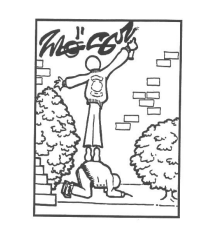
PICTURE 1 |
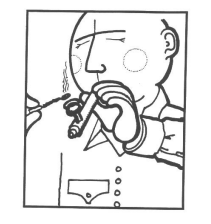
PICTURE 2 |
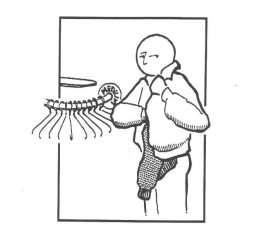
PICTURE 3 |
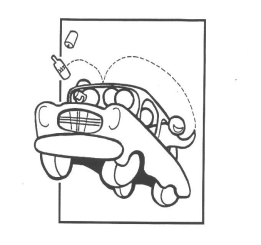
PICTURE 4 |
Directions: What is the juvenile doing in each picture?
Picture 1: ________________________________________________________________
Picture 2: ________________________________________________________________
Picture 3: ________________________________________________________________
Picture 4: ________________________________________________________________
Picture 1
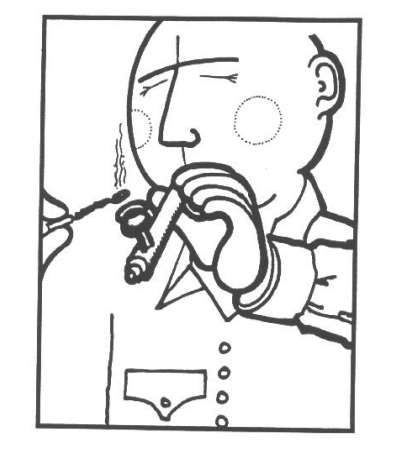
1. What are the consequences to the juvenile?
2. What are the consequences to other specific individuals, for example, to parents and other students?
3. What are the consequences to the general community?
Picture 2
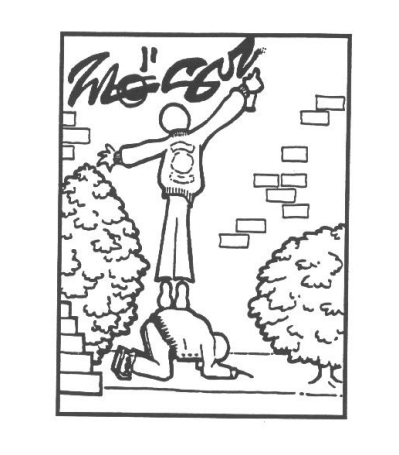
1. What are the consequences to the juvenile?
2. What are the consequences to other specific individuals, for example, to parents and other students?
3. What are the consequences to the general community?
Picture 3
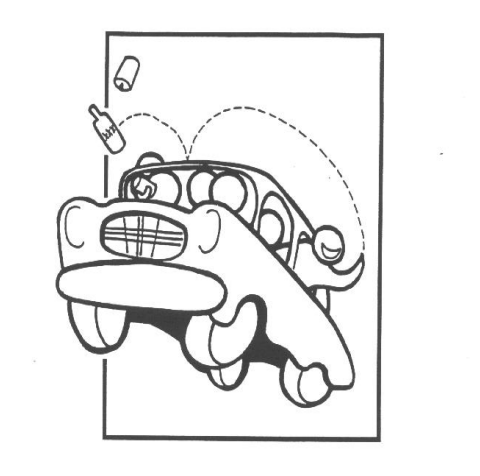
1. What are the consequences to the juvenile?
2. What are the consequences to other specific individuals, for example, to parents and other students?
3. What are the consequences to the general community?
Picture 4
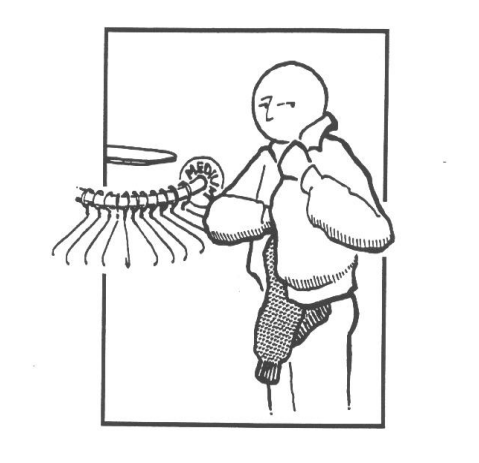
1. What are the consequences to the juvenile?
2. What are the consequences to other specific individuals, for example, to parents and other students?
3. What are the consequences to the general community?
|
|












